- Home
- Don DeLillo
Libra
Libra Read online
Table of Contents
Title Page
Copyright Page
Dedication
Introduction
PART ONE
In the Bronx
17 April
In New Orleans
26 April
In Atsugi
20 May
In Fort Worth
19 June
In Moscow
2 July
In Minsk
PART TWO
15 July
In Fort Worth
12 August
In Dallas
6 September
In New Orleans
25 September
In Mexico City
4 October
In Dallas
22 November
In Dallas
25 November
AUTHOR’S NOTE
FOR THE BEST IN PAPERBACKS, LOOK FOR THE
FOR THE BEST IN PAPERBACKS, LOOK FOR THE
PENGUIN BOOKS
LIBRA
Don DeLillo published his first short story when he was twenty-three years old. He has since written thirteen novels, including White Noise (1985), which won the National Book Award. It was followed by Libra (1988), his bestselling novel about the assassination of President Kennedy; Mao II (1991), which won the PEN/ Faulkner Award for Fiction; and the bestselling Underworld (1997), which in 2000 won the Howells Medal of the American Academy of Arts and Letters for the most distinguished work of fiction published in the prior five years. Other novels include Americana, End Zone, and Great Jones Street, all available from Penguin. His most recent novel is Cosmopolis. In 1999, DeLillo was awarded the Jerusalem Prize, given to a writer whose work expresses the theme of freedom of the individual in society; he was the first American author to receive it.
To request Great Books Foundation Discussion Guides by mail (while supplies last), please call (800) 778-6425 or E-mail [email protected]. To access Great Books Foundation Discussion Guides online, visit our Web site at www.penguin.comor the Foundation Web site at www.greatbooks.org.
PENGUIN BOOKS
Published by the Penguin Group
Penguin Group (USA) Inc., 375 Hudson Street, New York,
New York 10014, U.S.A.
Penguin Group (Canada), 90 Eglinton Avenue East, Suite 700, Toronto,
Ontario, Canada M4P 2Y3 (a division of Pearson Penguin Canada Inc.)
Penguin Books Ltd, 80 Strand, London WC2R ORL, England
Penguin Ireland, 25 St Stephen’s Green, Dublin 2, Ireland
(a division of Penguin Books Ltd)
Penguin Group (Australia), 250 Camberwell Road, Camberwell, Victoria 3124,
Australia (a division of Pearson Australia Group Pty Ltd)
Penguin Books India Pvt Ltd, II Community Centre, Panchsheel Park,
New Delhi-110 017, India
Penguin Group (NZ), cnr Airborne and Rosedale Roads, Albany, Auckland 1310,
New Zealand (a division of Pearson New Zealand Ltd)
Penguin Books (South Africa) (Pty) Ltd, 24 Sturdee Avenue, Rosebank,
Johannesburg 2196, South Africa
Penguin Books Ltd, Registered Offices:
80 Strand, London WC2R ORL, England
First published in the United States ,of America by Viking Penguin Inc., 1988
Published in a NAL / Penguin edition 1989
Published in Penguin Books 1991
This edition with a new introduction by the author published in
Penguin Books 2006
Copyright © Don DeLillo, 1988, 2006
All rights reserved
Portions of this book were published in Esquire magazine.
Publisher’s Note:
This is a work of fiction. It draws on the historical events surrounding the
assassination of President John F. Kennedy, and many of the real-life persons associ
ated with those events appear in this work as characters. However, insofar as this work
expresses any opinions or theories about the assassination or the persons involved,
those opinions and theories are solely the product of the author’s imagination.
eISBN : 978-1-101-04217-5
The scanning, uploading and distribution of this book via the Internet or via any other means without the permission of the publisher is illegal and punishable by law. Please purchase only authorized electronic editions, and do not participate in or encourage electronic piracy of copyrighted materials. Your support of the author’s rights is appreciated.
http://us.penguingroup.com
To the boys at 607: Tony, Dick and Ron
Introduction: Assassination Aura
-1-
Some stories never end. Even in our time, in the sightlines of living history, in the retrieved instancy of film and videotape, there are stories waiting to be finished, open to the thrust of reasoned analysis and haunted speculation. These stories, some of them, also undergo a kind of condensation, seeping into the texture of everyday life, barely separable from the ten thousand little excitations that define a routine day of visual and aural static processed by the case-hardened consumer brain.
There is a video game you can play in which you assume the position and vantage point of Lee Harvey Oswald looking out on Dealey Plaza as the presidential motorcade rolls by. The game was released on the forty-first anniversary of the assassination by a company based in Scotland. It challenges you to recreate the three shots fired at the president’s car from the sixth-floor window of the book warehouse where Oswald worked. If you can do this more accurately than anyone else, in terms of trajectory and timing, you can win one hundred thousand dollars. Shoot the first lady by mistake and see points deducted from your score.
There is a T-shirt you can wear that bears the photographic image of Oswald, mortally wounded by Jack Ruby, eyes shut, mouth twisted open, an icon of man in pain, except that the pain in this case is pure rock ’n’ roll. Ruby is brandishing a guitar, not a revolver, and the detective at the other end of the frame, in his pale suit and matching Stetson, is strapped into a guitar as well, and there at center stage is the mythic figure of Oswald, barking his sad and ragged love into a hand mike.
-2-
Through the years many themes have developed around the assassination of President Kennedy. They involve plot twists, complex motives, nitwit theories, foreign countries, domestic intelligence agencies, criminal organizations, law-enforcement bureaus and a sense of the secret manipulation of history.
Is there something else poised at the edge of revelation, some hard clear provable reality, one that points either to Oswald as the lone gunman or to the presence of a second shooter in DealeyPlaza that day, as the motorcade moved down Elm Street?
This question suggests the final theme, which is modem technology.
Technology tends to represent a thrust toward the future, an accelerated promise of microrefined systems and networks, deeper probes into the way we live and think. Technology claims the future on our behalf. It also has the capacity to reclaim the past—specifically, in this case, a single elusive moment trapped in the grooves of an old dictaphone belt.
There have been decades of photoanalysis, ballistics tests and other forms of forensic investigation. There is today, in the works, a digital scanning apparatus that may finally answer a central question still hovering over the blood-spattered limousine. This device will map the sounds recorded, accidentally, through an open microphone on a police motorcycle, supposedly when the shots were fired. These sounds were transmitted, instantaneously, to a control room at Dallas police headquarters, where all radio traffic was routinely recorded.
This is the only known audio recording made in those crucial moments. Years went by before the tape was discovered and then analyzed by acous
tics experts. Two investigations yielded conflicting results. But these findings were issued in 1979 and 1982. There are new technologies now, higher expectations. When the scanning apparatus is operational, scientists believe they will be able to render a clear digital image of the sounds captured on the old recording. They will isolate the gunshots from extraneous noise and remote voices. Then, perhaps, there will be an answer. Three gunshots, Oswald acted alone. Four gunshots, there was another shooter.
In Libra there he is, the second shooter, a man with a name, a face and a nationality. This is how lost history becomes the free weave of fiction. He stands behind the stockade fence on the grassy knoll, weapon in hand, watching the limousine approach. He is not the answer to the question that investigators, scientists, historians, government officials and countless others have been asking through the decades. He is simply the man who stands in the blank space.
-3-
Some years ago I received a letter from a newspaper editor asking whether I might be interested in writing an essay about American assassins. Oswald’s name was included in the letter, his first name spelled L-e-i-g-h. I stared down at the page for a moment, absorbing the impact. The error changed everything. I imagined this fellow, Leigh Oswald, slim and fit—sprays his hair for lasting shine and all-day control. He wants to be an actor or a model. He moves to New York and enrolls in acting class, waiting on tables to pay the rent and to allow an occasional small binge at Bloomingdale’s. History turns on a misspelled name.
It also repeats itself as performance art. Ant Farm, a coun terculture collective, re-enacted the spectacle of the presidential motorcade in Dallas on a summer day in 1975. Two members of the group played the Kennedys, both men, one in drag. Tourists began to gather in increasingly large numbers as the limousine ride down Elm Street was repeated twenty times in the course of the day. The collective had its own film and video crew and the tourists had their own Instamatics. There were no simulated gunshots, there was no one in the role of Oswald. But some people, watching, wept as the performance-president lurched suddenly in the rear seat, suffering an image death. Ant Farm was recreating a media event, not a shooting. They were, in effect, restag ing the Zapruder film, the original home movie of the shooting. Their version, called The Eternal Frame, is an act of eerie deadpan surrealism, with meanings collecting by the minute in an enormous plastic baggie of assassination aura.
-4-
The tremendous bruising force of history, sometimes random, often without logic or resolution, may produce a work of fiction that leans for its effectiveness on structure and pattern, on a detailed unraveling of some old perplexity or anxiety, some lingering confusion out there, in three dimensions, where the blood is thick and real but the gunshots can go uncounted.
One day, after this piece is written but perhaps before it appears, particle physicists at the Lawrence Berkeley National Laboratory will finish work on their digital scanner and prepare to extract a signal from the asymmetric grooves of the object known as Dictabelt No. 10.
Then, maybe, there will be a number to attach to the flurry of gunshots.
Three or four—or will it be five? This latest number was advanced as a result of an acoustical study made in 2001.
Can any number be definitive?
Technology by nature, in its brilliant futurity, incorporates a will to surpass the advances of the year, the week, the minute before. Waveform analysis, confocal microscopes, digital replicas. How soon before one technology yields to another? And where, finally, is the truth in this matter? Can some scattered noises in a crowded outdoor setting on a day in 1963 be recovered from an old damaged dictaphone belt, its grooves 75 microns wide, five microns deep? Recovered, copied, deciphered. We want to believe they can. A character in the novel maintains that facts are brittle things. He maintains that the past is changing even as he sits and thinks about it. But we want to believe we are dealing with science, not metaphysics. We are also dealing with human beings, of course, people in the shadow of an epic event that has generated strong controversy, conflicting scientific findings and the endless disputations of proponents for this or that version of the truth.
It is possible to imagine an effort that does not yield a clear answer to the question of the gunshots.
It is possible to imagine a clear answer followed by a passionate set of informed objections, or specious objects, or objections flung from the far limits of delirium.
The opposing views may well be defined, as always, not only in terms of the politics of the case but also within the supposedly stricter limits of scientific inquiry.
See the truth and know it, if you can.
-5-
A contemporary aspiring actor, not Leigh but Harv perhaps, moves from New York back to Dallas and soon finds himself serving drinks to corporate executives on the top floor of the old School Book Depository, one flight above the sniper’s lookout. This is what happens now on the seventh floor, in a gallery for art and photography. Sit-down dinners for twenty, receptions for two hundred. Guests can drift down to the sixth floor and look at museum artifacts of November 22. A couple of years ago, at a Warhol show that featured silkscreens of Jacqueline Kennedy, the museum director said, “Was Warhol a great artist? Does this work belong here? It’s like asking whether three shots or four were fired at Kennedy. These are great questions.”
In the summer of 2004, in New York, the Czechoslovak-American Marionette Theater offered a production titled The Life and Times of Lee Harvey Oswald. I wasn’t aware of the show until the run was over and so I don’t know how the enduring mystery was solved, three shots or four, or maybe five, in the knee-jerk world of jointed puppets manipulated by strings.
Don DeLillo, May 2005
PART ONE
Happiness is not based on oneself, it does not consist of a small home, of taking and getting. Happiness is taking part in the struggle, where there is no borderline between one’s own personal world, and the world in general.
LEE H. OSWALD
Letter to his brother
In the Bronx
This was the year he rode the subway to the ends of the city, two hundred miles of track. He liked to stand at the front of the first car, hands flat against the glass. The train smashed through the dark. People stood on local platforms staring nowhere, a look they’d been practicing for years. He kind of wondered, speeding past, who they really were. His body fluttered in the fastest stretches. They went so fast sometimes he thought they were on the edge of no-control. The noise was pitched to a level of pain he absorbed as a personal test. Another crazy-ass curve. There was so much iron in the sound of those curves he could almost taste it, like a toy you put in your mouth when you are little.
Workmen carried lanterns along adjacent tracks. He kept a watch for sewer rats. A tenth of a second was all it took to see a thing complete. Then the express stations, the creaky brakes, people bunched like refugees. They came wagging through the doors, banged against the rubber edges, inched their way in, were quickly pinned, looking out past the nearest heads into that practiced oblivion.
It had nothing to do with him. He was riding just to ride.
One forty-ninth, the Puerto Ricans. One twenty-fifth, the Negroes. At Forty-second Street, after a curve that held a scream right out to the edge, came the heaviest push of all, briefcases, shopping bags, school bags, blind people, pickpockets, drunks. It did not seem odd to him that the subway held more compelling things than the famous city above. There was nothing important out there, in the broad afternoon, that he could not find in purer form in these tunnels beneath the streets.
They watched TV, mother and son, in the basement room. She’d bought a tinted filter for their Motorola. The top third of the screen was permanently blue, the middle third was pink, the band across the bottom was a wavy green. He told her he’d played hooky again, ridden the trains out to Brooklyn, where a man wore a coat with a missing arm. Playing the hook, they called it here. Marguerite believed it was not so awful, missing a day
now and then. The other kids ragged him all the time and he had problems keeping up, a turbulence running through him, the accepted fact of a fatherless boy. Like the time he waved a penknife at John Edward’s bride. Not that Marguerite thought her daughter-in-law was worth getting into a famous feud about. She was not a person of high caliber and it was just an argument over whittling wood, over scraps of wood he’d whittled onto the floor of her apartment, where they were trying to be a family again. So there it was. They were not wanted anymore and they moved to the basement room in the Bronx, the kitchen and the bedroom and everything together, where blue heads spoke to them from the TV screen.
When it got cold they banged the pipes to let the super know. They had a right to decent heat.
She sat and listened to the boy’s complaints. She couldn’t fry him a platter of chops any time he wanted but she wasn’t tight with the lunch money and even gave him extra for a funnybook or subway ride. All her life she’d had to deal with the injustice of these complaints. Edward walked out on her when she was pregnant with John Edward because he didn’t want to support a child. Robert dropped dead on her one steamy summer day on Alvar Street, in New Orleans, when she was carrying Lee, which meant she had to find work. Then there was grinning Mr. Ekdahl, the best, the only hope, an older man who earned nearly a thousand dollars a month, an engineer. But he committed cunning adulteries, which she finally caught him out at, recruiting a boy to deliver a fake telegram and then opening the door on a woman in a negligee. This didn’t stop him from scheming a divorce that cheated her out of a decent settlement. Her life became a dwindling history of moving to cheaper places.

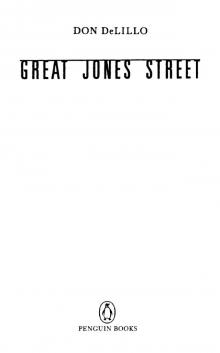 Great Jones Street (Contemporary American Fiction)
Great Jones Street (Contemporary American Fiction)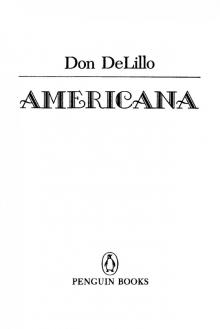 Americana
Americana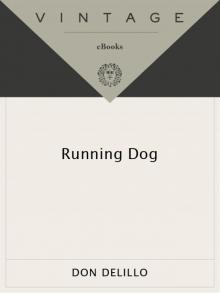 Running Dog
Running Dog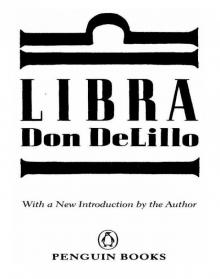 Libra
Libra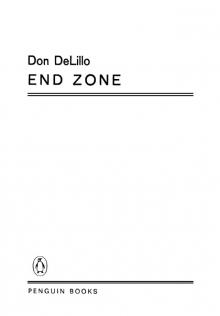 End Zone
End Zone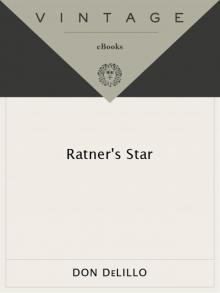 Ratner's Star
Ratner's Star Underworld
Underworld White Noise
White Noise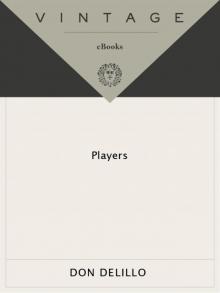 Players
Players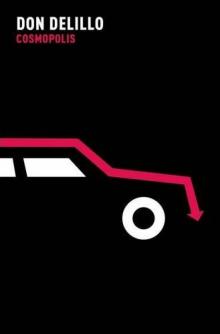 Cosmopolis
Cosmopolis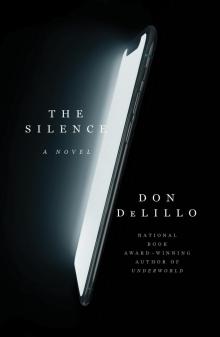 The Silence
The Silence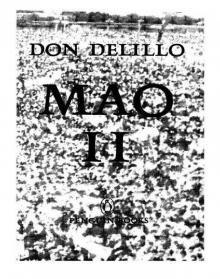 Mao II
Mao II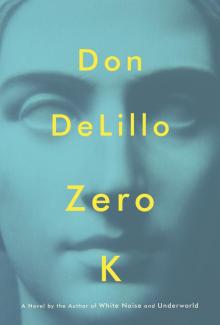 Zero K
Zero K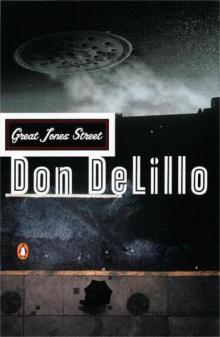 Great Jones Street
Great Jones Street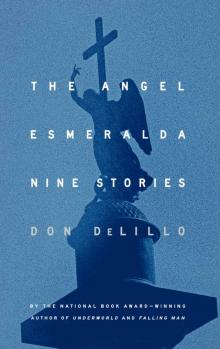 The Angel Esmeralda
The Angel Esmeralda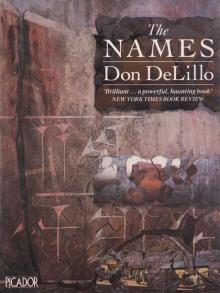 The Names
The Names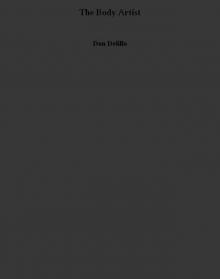 The Body Artist
The Body Artist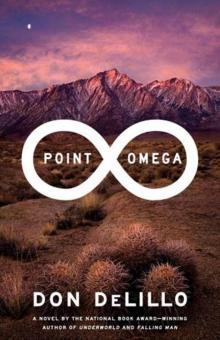 Point Omega
Point Omega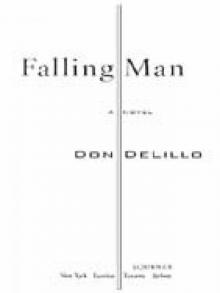 Falling Man
Falling Man